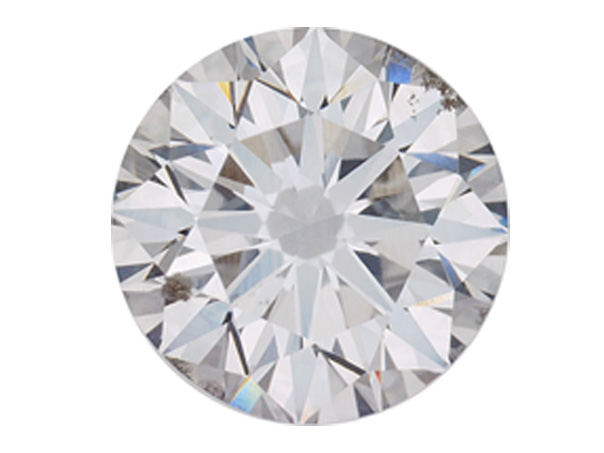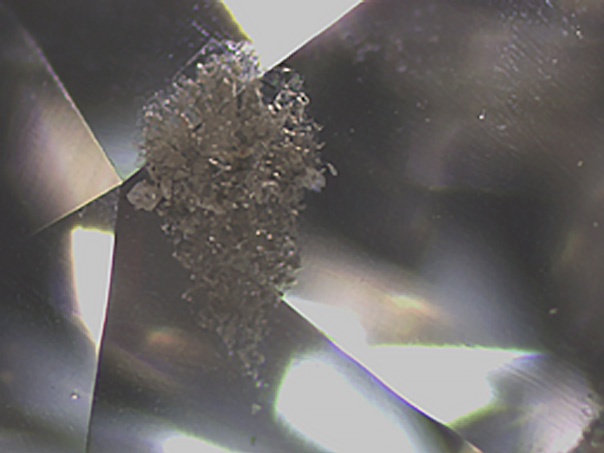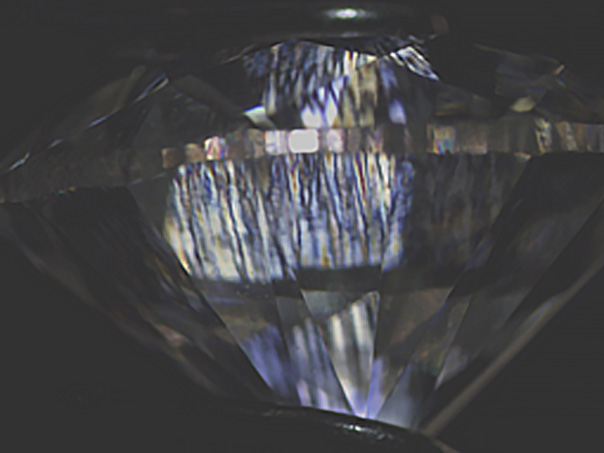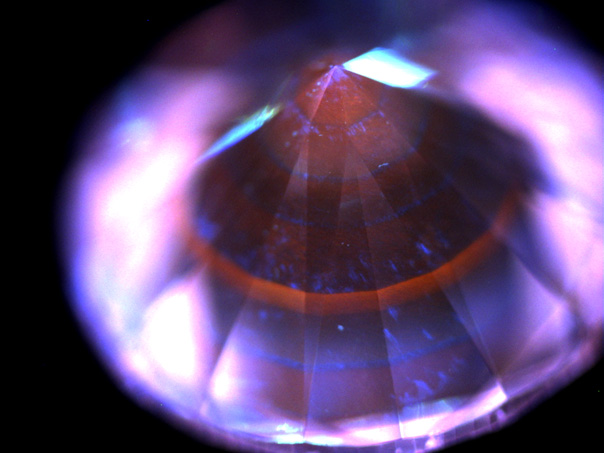The Laboratoire Français de Gemmologie (French Gemmological Laboratory in Paris, LFG) detects some synthetic diamonds on the French market. These synthetic diamonds are generally small diamonds (between 7/10 mm and 20/10 mm) mixed in batches of natural melees diamonds for use in paving jewelry. More rarely, we encounter single synthetic diamonds of larger size (but less than 0.2 g equivalent to 1 ct).
Recently, the LFG was solicited by a client with a gems and precious metals buying office for the analysis of what he had bought for a natural diamond (Figure 1). This stone of 0.44 g (equivalent to 2.13 ct) was found to be a type IIa diamond, ie potentially natural, synthetic or treated.
This type of diamond undergoes analyzes other than type Ia diamonds, such as luminescence imaging, low temperature photoluminescence spectrometry, in order to identify the stone.

Figure 1: 0.44 g CVD synthetic diamond analyzed at the LFG

Figure 2: graphitized inclusions in the CVD synthetic diamond, photo A. Delaunay, x50

Figure 3: Brush-like polarization anomalies observed between crossed polarizing filters typical of CVD synthetic diamonds
By observing the stone with a binocular, graphitized inclusions (feathers) in clouds are clearly visible. Other inclusions often arranged on a horizontal plane are also observable suggesting inclusions related to the growth morphology of the material (Figure 2).
When the stone is observed between crossed polarizers, parallel anomalies, perpendicular to the table, similar to those already documented in CVD synthetic diamonds (chemical vapor deposition) are visible (Figure 3, Delaunay A. et Fritsch E., Premiers diamants synthétiques déposés pour analyse au Laboratoire Français de Gemmologie, Revue de l’Association Française de Gemmologie, n°190, 2014). This is true in several different directions, unlike some similar figures observed in some natural type IIa.
Then the stone was observed with the DiamondView™, a luminescence imaging device with a high energy excitation source at 220 nm. Parallel layer structures characteristic of synthetic diamonds created with the CVD method are observable (Figure 4). The nature of the stone was confirmed with low temperature photoluminescence spectrometry with the presence of characteristic centers of synthetic CVD diamonds as the Si-V- center at 737 nm.

Figure 4: DiamondView™ image of the CVD synthetic diamond with clearly seen multiple layers (photo A. Herreweghe, LFG)
This synthetic diamond is the largest CVD synthetic diamond identified in France at the LFG. No engraving has been observed on the girdle of this stone, whereas most synthetic diamond manufacturers inscribe their mark for traceability. This stone is a fraudulent example to make it look like a natural diamond.
Jewelery professionals in France should be warned of these dangers. They can protect themselves with good knowledge by training or sending their stones in a competent laboratory.
Photos © LFG.

